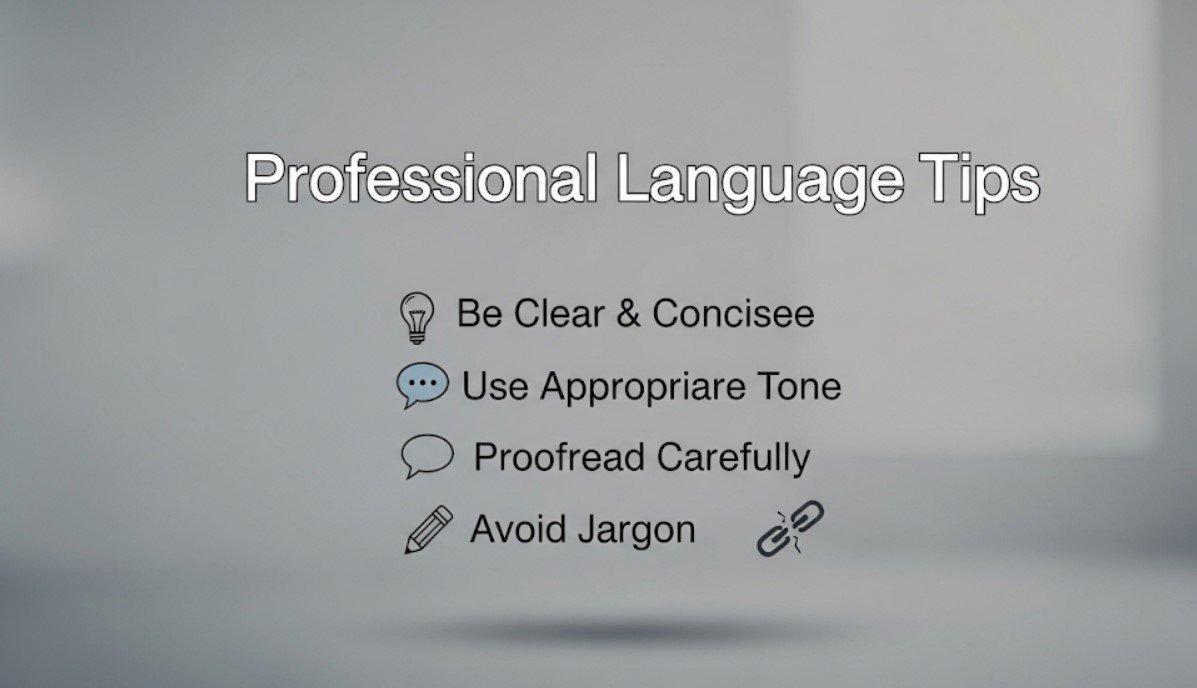Expressing sympathy in a professional setting can be challenging. Finding the right words is essential.
In any professional environment, showing empathy is crucial. Whether it’s a colleague dealing with a personal loss or a client facing a tough situation, your response matters. Saying “I am sorry to hear that” is a common phrase, but sometimes, you need more varied expressions.
This can help convey genuine concern and sensitivity. In this blog post, we will explore 27 ways to express sympathy professionally. These alternatives will help you communicate your empathy effectively while maintaining professionalism. Let’s dive in and discover how you can offer support with the right words.
Expressing Empathy
Expressing empathy in professional settings is crucial. It shows you care and understand the feelings of others. Using the right words can make a big difference. Here are ways to express genuine concern and offer support.
Showing Genuine Concern
When someone shares bad news, show that you care. Use phrases that convey heartfelt concern. Here are some examples:
- “I am truly sorry to hear that.”
- “That sounds really tough. I am here for you.”
- “I understand how hard this must be for you.”
- “Your situation sounds challenging. I am sorry you are going through this.”
Offering Support
Besides showing concern, offering support is vital. It lets the person know you are ready to help. Here are some supportive phrases:
- “Please let me know how I can assist you.”
- “I am here to help in any way you need.”
- “If you need anything, please do not hesitate to ask.”
- “I am available if you want to talk.”
Professional Language Tips

Expressing condolences professionally requires a delicate balance. The right language can show empathy and respect. Below are some tips to help you convey your message effectively.
Using Formal Tone
Using a formal tone is important in professional settings. It shows respect and seriousness. Phrases like “I am deeply saddened to hear that” can be effective. Maintain politeness and avoid casual words. Your tone should be respectful and sincere. Consider the context and relationship with the recipient. For example, with clients, you might say, “Please accept my heartfelt condolences during this challenging time.” For colleagues, “I was very sorry to hear about your loss” works well.
Avoiding Overused Phrases
Avoiding clichés makes your message more genuine. Phrases like “Sorry for your loss” can feel impersonal. Instead, use specific and heartfelt language. For example, “I am deeply sorry to hear about your difficult news.” This shows a more personal touch. Personalizing your message can make a big difference. You might say, “Your recent news saddened me deeply. My thoughts are with you.” This approach shows you care and have put thought into your words.
Alternative Phrases
Expressing sympathy professionally can be challenging. Finding the right words is important. Using alternative phrases ensures your message is sincere and respectful. Below are some heartfelt and empathetic alternatives to “I am sorry to hear that.”
Heartfelt Condolences
Sometimes, words fall short in expressing our feelings. Here are some ways to offer heartfelt condolences:
- “I am deeply sorry for your loss.”
- “Please accept my heartfelt condolences.”
- “My heart goes out to you during this tough time.”
- “I am truly sorry for your pain.”
- “You have my deepest sympathy.”
Deepest Sympathies
Offering sympathy can show you care. Here are some ways to convey your deepest sympathies:
- “You are in my thoughts and prayers.”
- “My deepest sympathies to you and your family.”
- “I am so sorry for your loss.”
- “Thinking of you in these difficult times.”
- “I extend my deepest sympathies.”
Acknowledging The Situation
Acknowledging the situation shows empathy and professionalism. Discover 27 ways to say “I am sorry to hear that” with care. These phrases help maintain respect and understanding in tough conversations.
When someone shares difficult news, it’s important to acknowledge the situation. This shows empathy and respect. It helps the person feel heard and understood. Let’s explore some ways to professionally say, “I am sorry to hear that.”
Recognizing The Impact
Acknowledge the impact of the situation. This shows you understand its seriousness. Here are some phrases you can use: – “I understand this must be very challenging for you.” – “This sounds like a difficult situation.” – “I can see how this could be upsetting.” These phrases show that you recognize the gravity of the situation.
Validating Feelings
Validate their feelings to show empathy. This helps build trust and rapport. Consider these responses: – “It’s okay to feel this way.” – “Your feelings are completely valid.” – “I understand why you feel this way.” These phrases reassure the person. They confirm that their feelings are normal and accepted. “`
Offering Assistance
When someone shares difficult news, offering assistance can show your empathy and willingness to help. It’s not just about saying “I am sorry to hear that.” It’s about showing genuine support. Offering practical help can make a significant difference. Here are some professional ways to offer assistance.
Extending Help
Expressing your desire to help is the first step. You can say, “Please let me know how I can assist you during this time.” This shows you are willing to provide support. Another option is, “I am here to help with anything you need.” It opens the door for them to ask for specific help. If you are in a professional setting, you might say, “Feel free to reach out if you need any assistance.” This keeps the offer open without being intrusive. Alternatively, you can say, “I can help with any immediate tasks you have.” It offers practical assistance right away.
Providing Resources
Sometimes, providing resources can be more helpful than direct help. You can say, “Here are some resources that might be useful for you.” This shows you are proactive in offering support. Another way is to say, “I can connect you with someone who can help.” This extends your support network to them. In a professional context, you might say, “There are some services that could assist you.” It points them towards helpful tools or services. You could also say, “I have some information that could be beneficial to you.” This provides them with useful knowledge or contacts.
Maintaining Sensitivity

Expressing sympathy in a professional setting requires a delicate balance. It’s important to convey genuine concern while respecting the other person’s emotions. This section will guide you on how to maintain sensitivity when offering condolences or apologies.
Choosing Words Carefully
Words carry weight, especially in sensitive situations. Choose words that are respectful and empathetic. Avoid phrases that may come off as insincere or dismissive. Here are some suggested phrases:
- “I am sorry to hear about your loss.”
- “My thoughts are with you during this difficult time.”
- “Please accept my deepest condolences.”
Using these phrases shows that you acknowledge the person’s pain. It also shows that you care about their feelings. Be sure to keep your tone gentle and your message clear.
Respecting Boundaries
Respecting boundaries means understanding that not everyone wants to share details of their personal struggles. Offer your support without prying into their private matters. Here are a few examples:
- “I’m here if you need someone to talk to.”
- “Please let me know if there’s anything I can do.”
- “Take all the time you need.”
These statements show that you are available and willing to help. They also respect the other person’s space and need for privacy. Remember, it’s not always about finding the right words. It’s about showing that you care and are there for them. Sometimes, a simple and heartfelt message is all that is needed.
Balancing Professionalism And Empathy
In professional settings, conveying empathy while maintaining professionalism can be a delicate balance. Finding the right words to express sympathy without overstepping boundaries is crucial. Below, we explore effective ways to say “I am sorry to hear that” professionally, focusing on balancing professionalism and empathy.
Striking The Right Tone
Using the right tone is essential. You want to be sincere without being overly emotional. A professional tone should be respectful and considerate. Avoid using jargon or overly formal language. Here are some examples:
- “I am deeply sorry to hear about your loss.”
- “Please accept my heartfelt condolences.”
- “You have my deepest sympathy during this difficult time.”
These phrases show empathy while maintaining a professional demeanor. They are simple, yet convey genuine concern.
Personalizing The Message

Personalizing your message can make it more meaningful. Use the person’s name and refer to specific details when appropriate. This shows that you are paying attention and truly care.
| Standard Phrase | Personalized Version |
|---|---|
| “I am sorry to hear that.” | “John, I am sorry to hear about your recent loss.” |
| “My condolences.” | “Sarah, my condolences on the passing of your father.” |
| “You have my sympathy.” | “Mike, you have my sympathy during this challenging time.” |
By personalizing your message, you show that you are not just offering a generic response. It demonstrates thoughtfulness and care.
Following Up
Following up after expressing your condolences can strengthen professional relationships. It shows you care and are willing to provide ongoing support. Maintaining communication can be crucial in a professional setting. It helps in building trust and rapport.
Checking In
After offering condolences, it’s essential to check in periodically. A simple message can make a difference. Ask how they are doing. Express your willingness to help. This gesture shows you care about their well-being.
Continuing Support
Offering continued support is vital in a professional environment. Let them know you are available if they need anything. Provide resources or assistance that might help. This can be an email, call, or a brief meeting. Ensure they feel supported throughout their difficult time.
Frequently Asked Questions
What Are Professional Ways To Say “i Am Sorry To Hear That”?
You can say “I am deeply saddened by the news” or “I extend my heartfelt condolences. ” These expressions are appropriate and convey empathy professionally.
Why Is It Important To Express Sympathy Professionally?
Expressing sympathy professionally shows respect and understanding. It helps build trust and maintain positive relationships in a professional environment.
How Can I Show Empathy In A Professional Email?
Use phrases like “I am truly sorry for your loss” or “My thoughts are with you. ” These show genuine concern and empathy.
Can Expressing Sympathy Improve Workplace Relationships?
Yes, expressing sympathy can strengthen workplace relationships. It shows you care about your colleagues’ well-being and fosters a supportive environment.
Conclusion
Expressing empathy professionally is important. These 27 phrases can help greatly. Use them to show understanding. They can improve communication. People appreciate kindness and respect. Practice using these phrases often. It shows you care. It builds trust. Positive interactions follow.
Simple words make a big difference. Keep conversations sincere. Empathy strengthens relationships. Use these phrases to convey genuine feelings. Your professionalism will shine.


